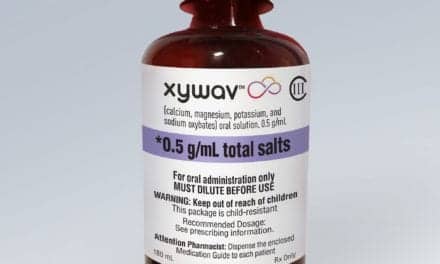Clinical trials could start on KemPharm idiopathic hypersomnia drug candidate as early as the second half of 2022.
The Florida-based pharmaceutical company KemPharm has already submitted an Investigational New Drug (IND) application to the U.S. Food and Drug Administration (FDA) and expects clinical trials to move forward later this year for a new idiopathic hypersomnia drug candidate. The drug, KP1077, could also undergo a clinical trial focused on narcolepsy commencing soon after, says Travis Mickle, PhD, president and chief executive officer of KemPharm, in a statement.
KemPharm, a specialty pharmaceutical company focused on the discovery of novel treatments for rare central nervous system diseases, successfully completed the pre-IND meeting process with the FDA in February 2022. During these interactions, KemPharm received confirmation that additional non-clinical studies were not needed to advance KP1077 into clinical development due to the abundance of data already available on serdexmethylphenidate (SDX), the sole active pharmaceutical ingredient in KP1077.
“We are excited to begin the clinical development process for KP1077 as a potential treatment for IH [idiopathic hypersomnia], a rare sleep disorder characterized by multiple, debilitating symptoms for which few treatment options exist,” says Mickle.
The KemPharm idiopathic hypersomnia drug candidate KP1077 could provide an improved treatment option for patients by addressing the most debilitating symptoms of the condition, including excessive daytime sleepiness, extreme difficulty waking up (sleep inertia), severe “brain fog,” and falling asleep unintentionally or at inappropriate times, according to the company.
“Our optimism surrounding KP1077 is based on the preclinical and clinical data regarding SDX, which includes the recent results from a Phase 1 clinical trial exploring the safety and pharmacokinetics (PK) of SDX administered in doses higher than currently approved,” says Mickle. “The data suggest that SDX produces a smoother, more gradual release of d-MPH that may avoid the adverse events associated with large and rapid exposure fluctuations that may be experienced with other stimulant-based therapies.”
Recent data published in the peer-reviewed journal Current Medical Research and Opinion, also found that SDX has significantly lower potential for abuse and minimal stimulant-like adverse events compared to d-MPH.
The paper reviewed three Phase 1 randomized, double-blind, placebo- and active-controlled crossover studies that evaluated the abuse-related effects of SDX compared to d-MPH via oral, intranasal and intravenous routes of administration.
The three clinical studies documented that SDX via all three routes of administration yielded statistically significantly lower abuse-related drug effects and stimulant-like adverse effects than molar equivalent doses of d-MPH.
“We are very pleased that this important research demonstrating SDX’s significantly lower abuse potential in comparison to d-MPH,” says Mickle. “Lower abuse potential is one of many beneficial properties of SDX that we believe differentiates the technology from other stimulant-based medications, bringing enhanced value potential to any product that utilizes SDX.”
Photo: ID 36553783 © Luchschen | Dreamstime.com.





